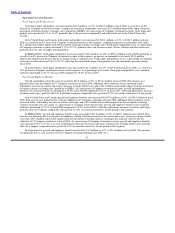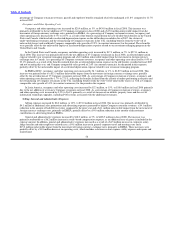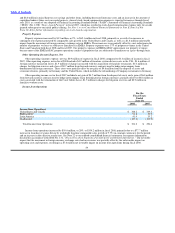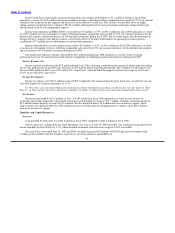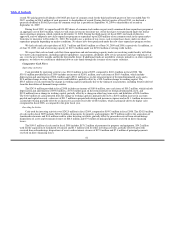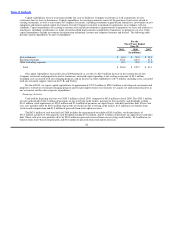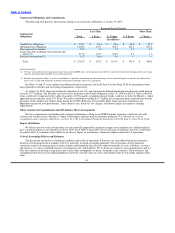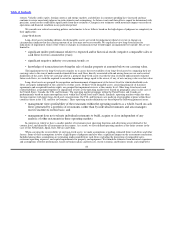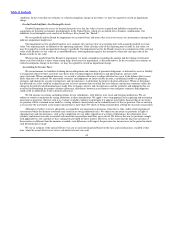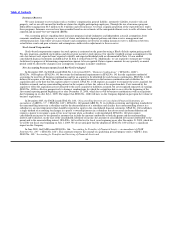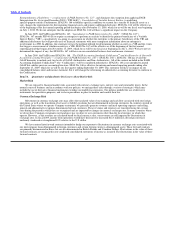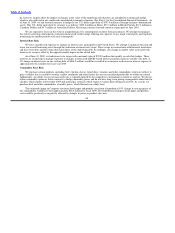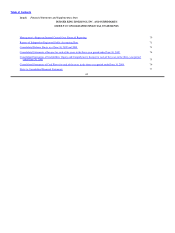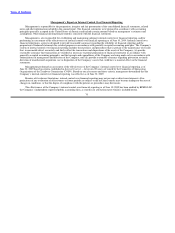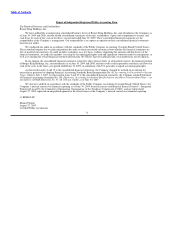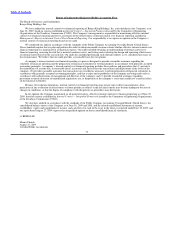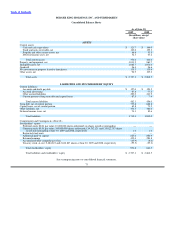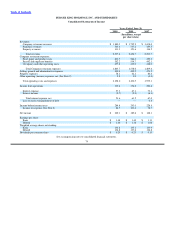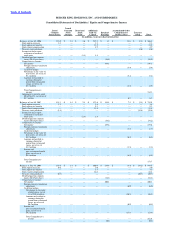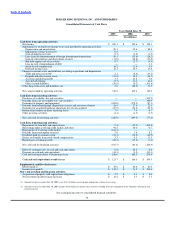Burger King 2009 Annual Report Download - page 69
Download and view the complete annual report
Please find page 69 of the 2009 Burger King annual report below. You can navigate through the pages in the report by either clicking on the pages listed below, or by using the keyword search tool below to find specific information within the annual report.
Table of Contents
Extinguishments of Liabilities — a replacement of FASB Statement No. 125”, and eliminates the exception from applying FASB
Interpretation No. 46 (revised December 2003) (“FIN 46(R)”), Consolidation of Variable Interest Entities, to qualifying
special−purpose entities. Furthermore, SFAS No. 166 establishes specific conditions to account for a transfer of financial assets as a
sale, changes the requirements for derecognizing financial assets and requires additional disclosure. SFAS No. 166 will be effective as
of the beginning of the first annual reporting period that begins after November 15, 2009, which for us will be our fiscal year beginning
on July 1, 2010. We do not anticipate that the adoption of SFAS No. 166 will have a significant impact on the Company.
In June 2009, the FASB issued SFAS No. 167, “Amendments to FASB Interpretation No. 46(R)” (“SFAS No. 167”).
SFAS No. 167 amends FIN 46 (R) to require an enterprise to perform an analysis to identify the primary beneficiary of a Variable
Interest Entity (“VIE”), a qualitatively on−going re−assessment on whether the enterprise is the primary beneficiary of the VIE and
additional disclosures that will provide users of financial statements with more transparent information about an enterprise’s
involvement in a VIE. In addition, this statement revises the methods utilized for determining whether an entity is a VIE and the events
that trigger a reassessment of whether an entity is a VIE. SFAS No. 167 will be effective as of the beginning of the first annual
reporting period that begins after November 15, 2009, which for us will be our fiscal year beginning on July 1, 2010. We have not yet
determined the impact, if any, that SFAS No. 167 will have on our consolidated balance sheet and income statement.
In June 2009, the FASB issued SFAS No. 168, “The FASB Accounting Standards Codificationtm and the Hierarchy of Generally
Accepted Accounting Principles — a replacement of FASB Statement No. 162” (“SFAS No. 168”). SFAS No. 168 has revised the
GAAP hierarchy to include only two levels of GAAP: Authoritative and Non−Authoritative. All of the content included in the FASB
Accounting Standards Codificationtm (the “Codification”) will be considered authoritative. SFAS No. 168 is not intended to amend
GAAP but codifies previous accounting literature. SFAS No. 168 is effective for interim and annual reporting periods ending after
September 15, 2009, which for us will be our first quarter ending September 30, 2009. This statement will have no impact on our
consolidated balance sheet and income statement, but it will change the referencing of authoritative accounting literature to conform to
the Codification.
Item 7A. Quantitative and Qualitative Disclosures About Market Risk
Market Risk
We are exposed to financial market risks associated with currency exchange rates, interest rates and commodity prices. In the
normal course of business and in accordance with our policies, we manage these risks through a variety of strategies, which may
include the use of derivative financial instruments to hedge our underlying exposures. Our policies prohibit the use of derivative
instruments for speculative purposes, and we have procedures in place to monitor and control their use.
Currency Exchange Risk
Movements in currency exchange rates may affect the translated value of our earnings and cash flow associated with our foreign
operations, as well as the translation of net asset or liability positions that are denominated in foreign currencies. In countries outside of
the United States where we operate Company restaurants, we generally generate revenues and incur operating expenses and selling,
general and administrative expenses denominated in local currencies. These revenues and expenses are translated using the average
rates during the period in which they are recognized and are impacted by changes in currency exchange rates. In many countries where
we do not have Company restaurants our franchisees pay royalties to us in currencies other than the local currency in which they
operate. However, as the royalties are calculated based on local currency sales, our revenues are still impacted by fluctuations in
exchange rates. In fiscal 2009, income from operations would have decreased or increased $12.3 million if all foreign currencies
uniformly weakened or strengthened 10% relative to the U.S. dollar.
We have entered into forward contracts intended to hedge our exposure to fluctuations in currency exchange rates associated with
our intercompany loans denominated in foreign currencies and certain foreign currency−denominated assets. These forward contracts
are primarily denominated in Euros but are also denominated in British Pounds and Canadian Dollars. Fluctuations in the value of these
forward contracts are recognized in our condensed consolidated statements of income as incurred. The fluctuations in the value of these
forward contracts
67


